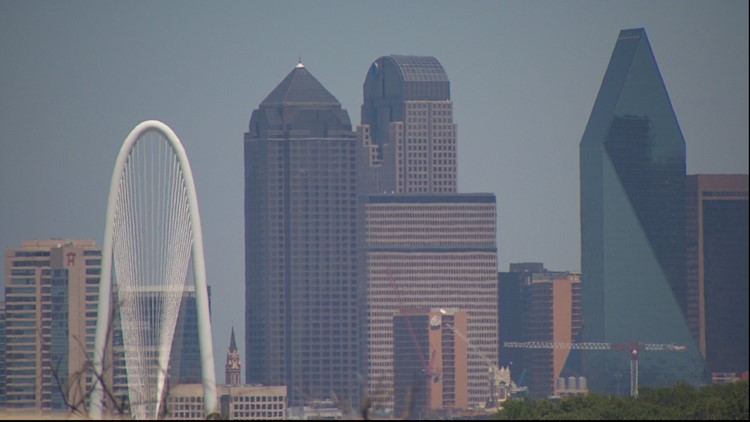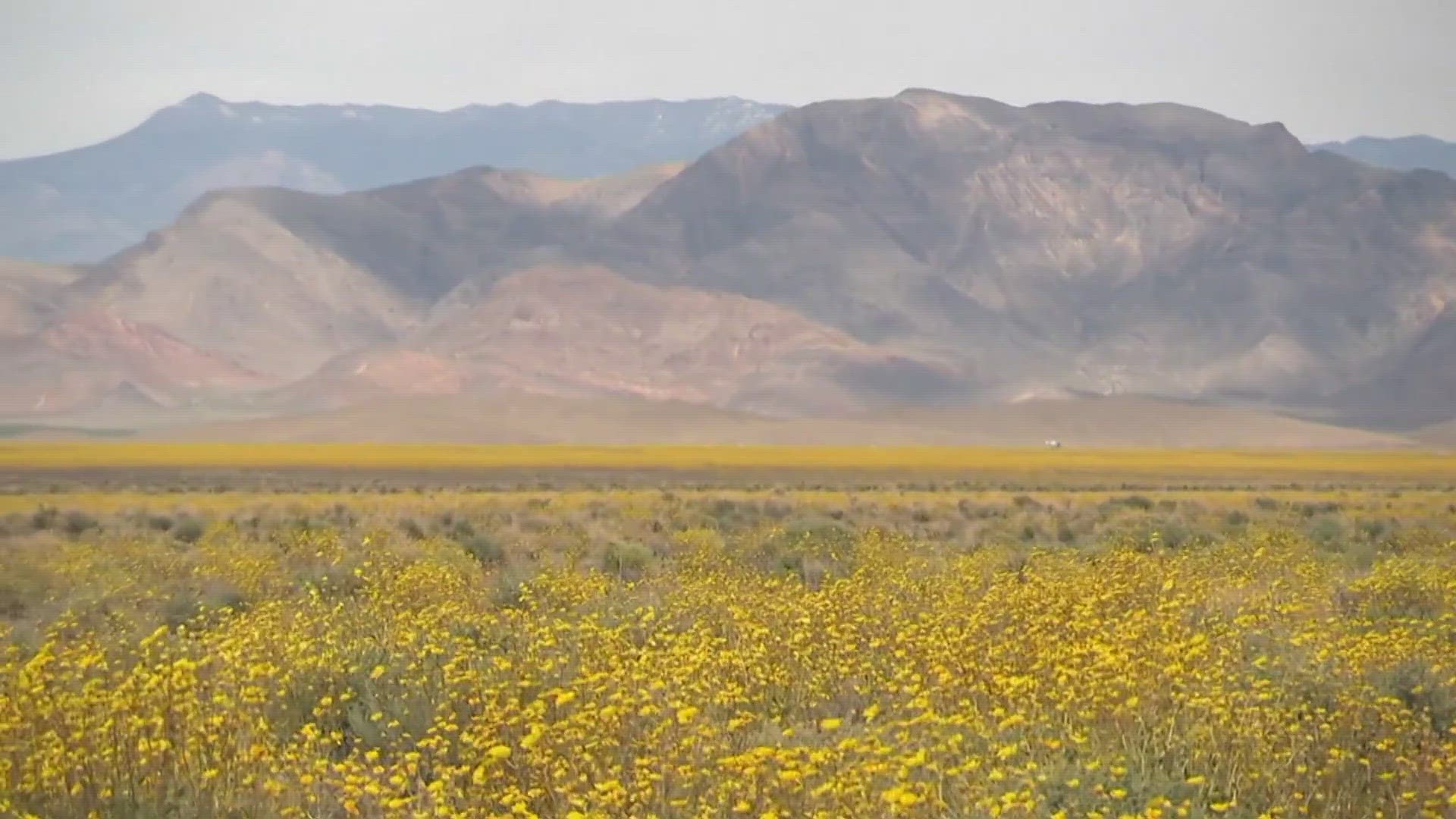The air over Dallas is not healthy to breathe, a new study from the American Lung Association found.
The county has a high level of ozone pollution, for which it got an "F" grade in the State of the Air 2020 report.
Between 2016 and 2018, more than 137 million people in the U.S. lived in counties that got an "F" for ozone levels, a significantly higher number than previous years, the report found. Researchers attributed the rise to warming temperatures and hotter years, which make ozone more likely to form.
But it's not all bad news.
Dallas County's average annual concentration of particle pollution is acceptable, the report found, giving it a "pass" grade, while its annual average number of high particle pollution days got a "C," a passing grade, as well.
Overall, the county has seen a consistent downward trend in these levels of pollution over the past 20 or so years, with the air getting widely cleaner as time goes on.
Dallas County did not fare as poorly as other counties across the country.
"More than 20.8 million people live in counties that got an F for all three air pollution measures," the report said.
So what exactly is ozone or particle pollution?
Ozone is an invisible pollutant that can be extremely bad for one's health, according to the American Lung Association. The pollutant is "currently one of the least-well-controlled... in the U.S" and can be deadly.
It's known better as smog, which is produced when ozone mixes with other pollutants. It can be harmful to breathe, particularly because of how it chemically reacts with the tissue in your lungs, according to the American Lung Association.
You've probably heard of ozone before, in reference to the ozone layer. That's a good layer of the gas that protects the earth from ultraviolet radiation from the sun.
But when ozone gets produced and concentrated on the ground, it can be deadly, particularly for those who already have difficulty breathing.
Ozone is created from certain gases that come from burning fossil fuels (think a car's tailpipe) or from when chemicals evaporate. When those gases get hit with sunlight, ozone smog is created.
People who work or exercise outside, those with asthma or COPD, anyone over the age of 65 and children and teens are particularly vulnerable to ozone pollution, the American Lung Association said. The pollution itself can cause immediate breathing problems or premature death when levels are high.
Particle pollution also can come from your tailpipes— it's the "dirty" part of your exhaust, essentially made up of tiny particles that can be harmful to breathe in, the American Lung Association explains. The smaller those particles become, the harder it is for our bodies to keep them out, allowing the smallest ones to enter our lungs and bloodstreams.
Those exposed to particle pollution have a higher risk of heart disease, lung cancer and asthma attacks, according to the American Lung Association.
People who are obese, low-income, current and former smokers, have cardiovascular or lung disease are all at a greater level of risk from particle pollution, along with people of color and those under the age of 18.
In Dallas County, hundreds of thousands of people fall into those categories.
"These two pollutants threaten the health and the lives of millions of Americans," the report said.
10 tips from the American Lung Association on how to protect yourself from pollution:
- Check daily air pollution forecasts in your area. The color-coded forecasts can let you know when the air is unhealthy in your community. Sources include local radio and TV weather reports, newspapers and online at airnow.gov.
- Avoid exercising outdoors when pollution levels are high. When the air is bad, walk indoors in a shopping mall or gym or use an exercise machine. Limit the amount of time your child spends playing outdoors if the air quality is unhealthy.
- Always avoid exercising near high-traffic areas. Even when air quality forecasts are green, the vehicles on busy highways can create high pollution levels up to one-third a mile away.
- Use less energy in your home. Generating electricity and other sources of energy creates air pollution. By reducing energy use, you can help improve air quality, curb greenhouse gas emissions, encourage energy independence and save money! Check out the U.S. Environmental Protection Agency's easy tips for conserving energy at home.
- Encourage your child's school to reduce exposure to school bus emissions. To keep exhaust levels down, schools should not allow school buses to idle outside of their buildings. Many school systems are using the U.S. EPA's Clean School Bus Campaign to clean up these dirty emissions.
- Walk, bike or carpool. Combine trips. Use buses, subways, light rail systems, commuter trains or other alternatives to driving your car.
- Don't burn wood or trash. Burning firewood and trash are among the major sources of particle pollution (soot) in many parts of the country.
- Use hand-powered or electric lawn care equipment rather than gasoline-powered. Old two-stroke engines like lawnmowers and leaf or snow blowers often have no pollution control devices. They can pollute the air even more than cars, though engines sold since 2011 are cleaner.
- Don't allow anyone to smoke indoors and support measures to make all public places tobacco-free.
- Get involved. Start by checking out our Healthy Air Campaign which has more information about what you can do.



